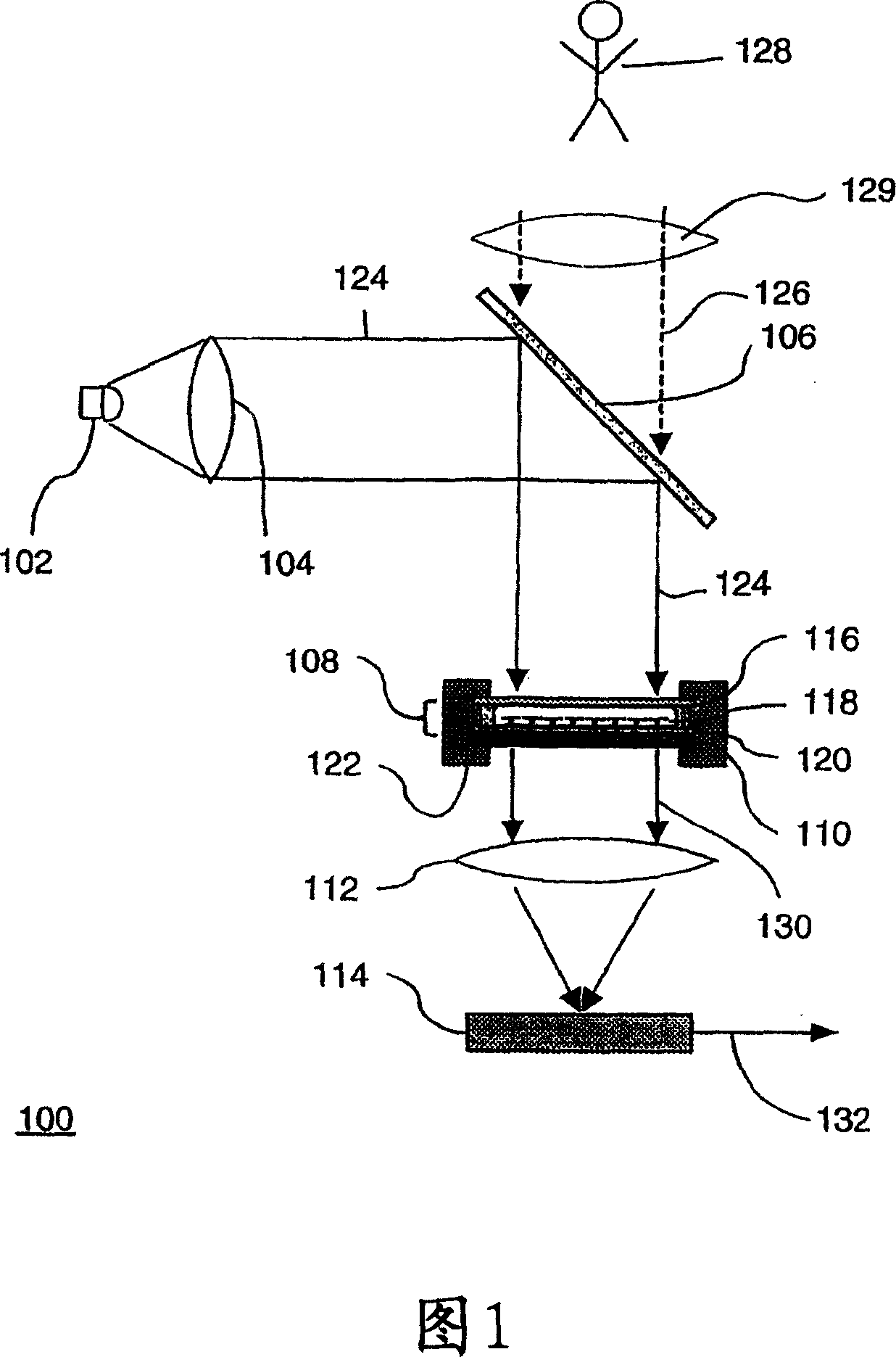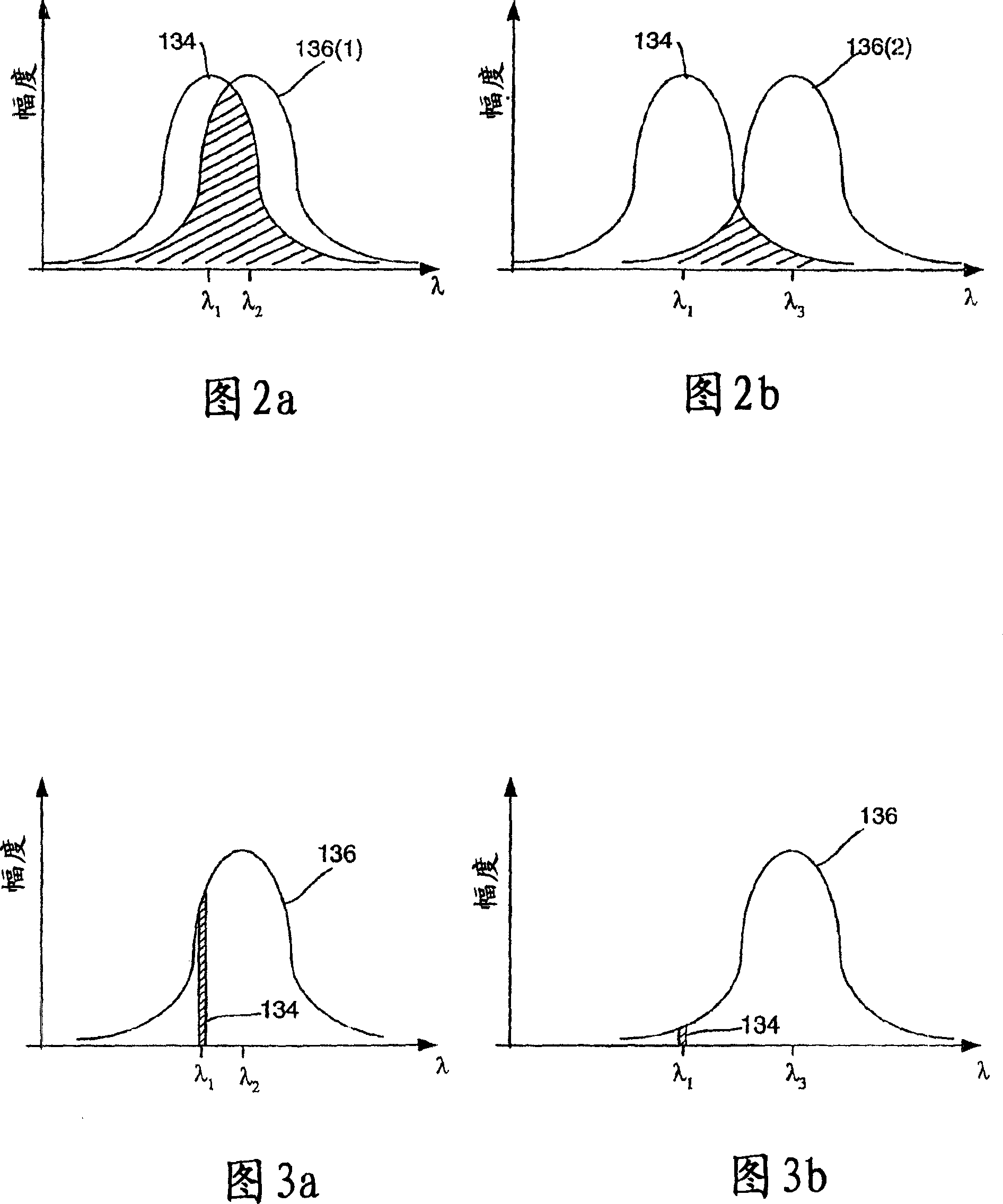Infrared camera system
A camera and image technology, applied in the parts of TV systems, image communication, TV and other directions, can solve the problems of low output, limited resolution, and rising costs.
- Summary
- Abstract
- Description
- Claims
- Application Information
AI Technical Summary
Problems solved by technology
Method used
Image
Examples
Embodiment Construction
[0033] The described embodiment is an uncooled infrared (IR, infrared) camera system that uses a sensor that responds to infrared energy radiated by the scene to be imaged (although other wavelengths are also contemplated, typically 8 to 15 microns ( μm)—here, infrared is also referred to as infrared light or infrared radiation) thermally tunable filters. The filter element modulates a near-infrared (NIR) carrier signal (e.g., light having a wavelength of approximately 850 nanometers (nm)—also known as near-infrared optical signal, near-infrared light, probe, probe signal, or probe light) as infrared energy result of the change. The camera system uses a near-infrared detector (eg, a CMOS or CCD based imaging array, or a p-i-n photodiode array) to detect the modulated carrier signal.
[0034] Infrared camera systems are based on thermal sensors using optical readout. The principle behind the thermal sensor described here is simple. A narrowband source produces an "optical ca...
PUM
 Login to View More
Login to View More Abstract
Description
Claims
Application Information
 Login to View More
Login to View More - R&D
- Intellectual Property
- Life Sciences
- Materials
- Tech Scout
- Unparalleled Data Quality
- Higher Quality Content
- 60% Fewer Hallucinations
Browse by: Latest US Patents, China's latest patents, Technical Efficacy Thesaurus, Application Domain, Technology Topic, Popular Technical Reports.
© 2025 PatSnap. All rights reserved.Legal|Privacy policy|Modern Slavery Act Transparency Statement|Sitemap|About US| Contact US: help@patsnap.com



